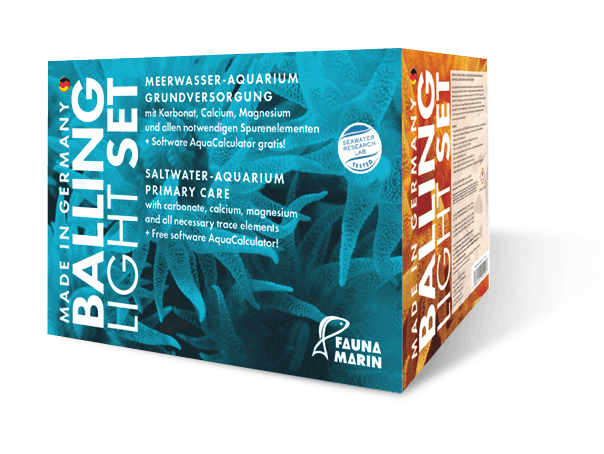Vanadium
The trace element vanadium represents the second most common transition metal in the sea after molybdenum. Under natural circumstances, it can be meadured with a concentration of 3–5 µg/l (0,26 US.liq.gal.) in seawater and up to 100 mg/kg (2,2 lbs.) in sediment.
Vanadium exists in many oxidation states, with vanadium (5) being the most common in seawater. The vanadium stages (3), (4), and (5) are biologically interesting because only these are involved in biological processes. These compounds are essential for sea squirts and sponges. It is somewhat less common as a co-metal enzyme.
What’s this:
Vanadium is an important essential element and belongs to the Dynamic Elements. Vanadium is important for the formation of colour pigments, growth and numerous physiological processes in coral tissue and the entire aquarium.
Problems:
Too low concentrations lead to weak formation of colors, low color contrast and weak fluorescence effects. Nutrient build-up and breakdown are disturbed. Too high concentrations are relatively uncritical, but darkening of the corals and increased algae growth are a common consequence. From about 50 µg/l (0,26 US.liq.gal.) vanadium starts to precipitate and form deposits.
Measures:
Filtering via adsorber, partial water change and removal of the source/addition
Indicator species:
Spongy, greyish colours, certain Acropora species (var. “tricolor”) without brilliance, Stylophora pistillata var. “Milka” without silvery shining tips, low growth of sponges and calcarous algae. Shifting, light problems, brightening of LPS.
Value too high:
Partial water change, filtering via Powerphos, Phos 0.04, zeolite and activated carbon.
Value too low:
Elementals Trace V, Balling Light Trace 1 and 2, Color Elements green/blue.
| Vanadium | Dynamic Elements |
|---|---|
| Variety | Transition material |
| Default value | 2-5 µg/l (0,26 US.liq.gal.) |
| Skill Level | Red, only for experienced aquarists |
| Source | salt, supply systems trace element mixtures |
| Available | Elementals V, Balling Light System, Color Elements, Feed |
| Importance 1–6 | 2 |
| Detection quality | safe |
| Relation values | Dynamic Elements |

Balling Light:
Vanadium is dosed by the system via the Balling Light System.
So far, two enzymes containing vanadium are known. The most important are the vanadium nitrogenases. These enzymes are used by nitrogen fixing bacteria to reduce nitrous oxide to ammonia. Although this metal enzyme system usually contains a molybdenum-iron cofactor, some bacteria produce additional nitrogenases with vanadium. Vanadium is particularly important for denitrification when molybdenum or iron is limited. Aquariums with algae refugia also have a higher demand for vanadium, as marine algae accumulate vanadium.
We consider vanadium to be very important in seawater aquaria. It should not only be dosed via the water, but also added via the feed. Vandium is also a particularly important element when it comes to converting inorganic halogens into organic molecules. This increases the bioavailability of many elements. This is particularly important for biofilms and sponges, sea squirts and the coloration of corals. The vanadium value in the aquarium can be set above that of natural seawater. A value between 5 and 8 µg/l (0,26 US.liq.gal.) has proven to be useful.
When dosing bacteria, it is also important to ensure that the dosage of vanadium is sufficiently high. A lack of vanadium is noticeable by a reduced photosynthesis rate in corals (and algae). If there is a lack of nitrogen decomposition, it is also important to ensure that sufficient quantities of vanadium and molybdenum are in the system. Vanadium is also involved in the colouration of SPS and LPS. In the case of a vanadium deficiency, the colouring is kind of dense; red colours fade and corals tend to become monochromatic.
Especially in LPS corals, the availability of vanadium is important and prevents the often occurring brightening during or following tissue recession. Bright blue and red colours are also promoted by an optimum vanadium concentration. The Fauna Marin feeding systems contain sufficiently high amounts of vanadium.